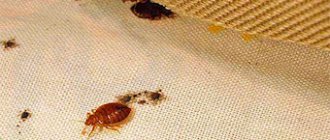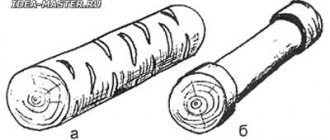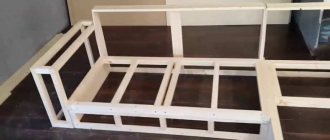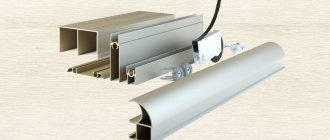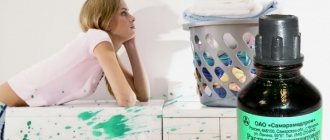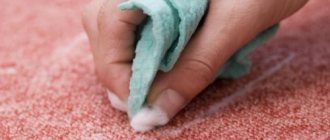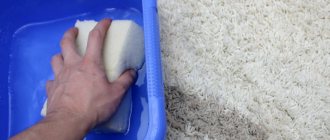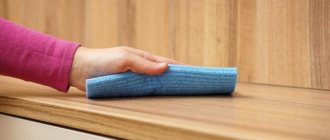Old stains on the upholstery of the sofa are a problem for every modern housewife. Oil that gets on the upholstery must be removed immediately , otherwise it will penetrate into the structure of the fabric, which will lead to the appearance of a sloppy greasy mark. If you missed the moment and did not eliminate the contamination, then we bring to your attention instructions in which we will tell you how to remove a greasy stain from the sofa yourself at home, using improvised means!
Basic cleaning rules
Any cleaning that is expected to have a positive effect must occur in accordance with certain rules. This also applies to removing grease stains from the sofa, for which it is advisable to follow certain recommendations:
- before applying the selected product to the main upholstery, it must be tested on an inconspicuous area to avoid significant damage to the sofa;
- any stain is cleaned from its edges to the center and nothing else;
- when using caustic chemicals, for example, ammonia, the windows should be ventilated and a gauze bandage should be worn;
- If you haven’t carried out preventative cleaning of the sofa for a long time, you first need to get rid of the dirt, and then clean all the upholstery.
How to remove a grease stain from a sofa
There are two ways to get rid of a greasy stain from a sofa:
- using available means;
- using household chemicals.
Depending on the size and age of the grease stain, both methods are quite effective, but some of them are not suitable for all types of materials. Therefore, when cleaning dirt, first of all, determine what material your upholstery is made of, and only then start cleaning.
Pile upholstery: chenille, velor, flock
Fresh stains on pile fabrics are removed in several ways:
- Sprinkle salt over the entire surface of the stain (you can use flavored sea salt) and leave for 30 minutes. It is able to absorb fat and leave no trace. Once the salt has taken effect, remove it with a vacuum cleaner or brush.
- Add 30 ml of lemon juice and 15 ml of ammonia to 1 liter of warm water. Use a cotton pad soaked in the solution to treat the stain. Next, take a small piece of cotton and wet it in the same way, then spread it over the entire contaminated area. After 1.5 hours, wipe with a soap solution based on laundry soap, rinse with clean water and dry.
Natural fabrics: cotton, jacquard, tapestry, matting
Natural materials are more demanding. They do not “like” intense friction, aggressive chemicals and prolonged exposure to water. To remove a greasy stain from a sofa made of natural materials, you must follow these steps:
- Apply one of the following products to a fresh greasy stain: soda, starch, chalk. Leave it like this for 10-15 minutes, then remove the powder with a vacuum cleaner with a soft attachment.
- One of the weirdest ways is to use shaving foam. Apply it to the stain and gently rub it with a brush. After 7-10 minutes, remove the foam with a paper towel, wipe the area with a clean damp sponge and dry the upholstery.
Upholstery made of leatherette, leather, vinyl
Removing a greasy stain from a sofa made of such smooth materials as leatherette, leather, vinyl is, in principle, the easiest task, but it also requires the most careful approach:
- Beat the egg white until a stable foam forms and apply the entire mixture to the stain. After 7-10 minutes, remove the product with a paper or damp cloth and rinse with clean water.
- Add 30 ml of lemon juice or vinegar to 1 liter of warm water. Rinse the entire problem area first with the resulting solution, and then with clean water. The upholstery should not be left wet, so the final step is to wipe the surface dry with a soft cloth (cotton or microfiber).
Folk recipes
If you don’t have an effective Vanish gel or powder on hand, and a fresh stain has already spread across the surface of the sofa, then you can use folk remedies that everyone has on hand at home :
You need to mix a tablespoon of vinegar in 1 liter of water and apply it to a rag and wipe the upholstery. Vinegar not only works well on tough stains, it also kills bad odors. Instead of vinegar, you can use potassium permanganate, but in smaller quantities.- A fresh stain should be thoroughly soaped with soap, preferably household soap, let the solution absorb the dirt for a couple of minutes, and then rinse it off with a soft rag or household sponge.
- A good combination in the fight against fat and wine: soda, salt, starch. It is enough to mix one spoon of each ingredient and sprinkle the resulting mixture onto the stain. Let it sit, then rinse with a wet cloth.
If the upholstery is light, then the best helper will be citric acid , which must be diluted in water (a third of a teaspoon per 250 ml of water will be enough) and treated problem areas on the sofa.
How to remove a greasy stain from fabric without streaks?
After another greasy “decoration” on the sofa, you should act immediately. First, remove excess fat by blotting it with a clean napkin. Secondly, sprinkle table salt on the dirty area.
Leave the salt to absorb the fat for several hours .
After which you can brush off the salt or go over the entire surface of the sofa with a vacuum cleaner. The brush on the vacuum cleaner must be stiff for better cleaning. The ideal product for combating greasy stains is “Fairy” for washing dishes. Instead of dishes, you can use it in the fight for clean upholstery of the sofa.
“Fairy” needs to be applied very little, in a thin layer and left for only 15 minutes , and then rinsed off with a damp cloth. The product can be replaced with any other anti-grease dishwashing solution.
How can I remove felt-tip pen and ink?
Marker and ink stains fall under the “highly hazardous” category. And if the ink can be removed using simple acetone or nail polish remover, then other means will be required to deal with the felt-tip pen.
fabric-covered sofas :
- hydrogen peroxide,
- vegetable oil,
- laundry soap.
The procedure is the same as for a leather surface: apply, wait, rinse.
Read more about removing stains from a handle from a leather sofa here, from fabric upholstery, leatherette and eco-leather - here.
How to remove ink from sofa upholstery, video tip:
How to remove iron marks?
The mark from a hot iron on the sofa is not a standard stain - it is a serious problem that cannot always be removed.
The sequence for removing iron stains from upholstery is as follows:
Apply a little hydrogen peroxide to a rag or household napkin and wipe the stain thoroughly. If peroxide doesn't help, try ammonia. You shouldn't be too zealous - a couple of drops is enough.- Didn't peroxide and acetone help? An old folk method is whey. It should be applied in a thick layer, and then allowed to absorb for at least 2-3 hours. Rinse off with plain water.
- If the above methods do not bring results, then you can try rubbing the stain with a freshly cut onion, and then wipe the affected area with a rag.
- And the last remedy is lemon and table salt. The application principle is standard: rub with lemon, sprinkle with salt, let it brew, rinse with water or a wet rag.
If all else fails, then there are two options : sew a patch on the faded area or take the sofa to a special furniture dry cleaner. The first method will be much cheaper.
From red wine
Wine is a very stable product, and if the wine is cheap, it will still contain a certain amount of dye, which will only complicate the task.
For example, HG Extra Strong Stain Spray . The product has proven itself to be the best. Its formula is dominated by active oxygen, which penetrates the pores of stains and quickly breaks them down into smaller components.
If iodine gets on your sofa upholstery, many home experts advise...doing nothing.
Yes, yes, do nothing, since iodine is a volatile compound and should completely evaporate from the sofa upholstery over time .
To speed up the process, you can try a freshly cut green apple or a simple soap solution. Just use laundry soap.
The situation is standard: a girl paints her nails, sitting comfortably on the sofa. One awkward move - nail polish ends up on the upholstery of the sofa. And immediately they start rushing around the entire apartment in search of a handy stain remover.
There is no need to worry or rush things, even if the varnish dries . In this case, you cannot use improvised means - they are definitely ineffective against varnish!
Water stains
Water spilled on the upholstery of a sofa leaves its consequences - unsightly, constantly visible stains, the cause of which is improper wiping.
The most practical way to get rid of such stains is to consistently and methodically wipe the entire sofa upholstery with a wet cloth. It is necessary to rinse a rag or household sponge as often as possible.
If there are still stains, you can add a pinch of citric acid to the water. Just don’t use starch or borax - there will be much more stains.
Oil
Spilled oil is serious. It dries quickly, is absorbed deeply, and it will take a lot of time and effort to completely get rid of an oil stain.
It is better to remove dried oil using several means in succession. For example, first soften it with a stain remover gel, then try a freshly cut lemon, and then walk over the surface of the upholstery several times with laundry soap.
Chocolate
Melted chocolate cannot be immediately wiped off the upholstery - you must wait until it dries, and then carefully scrape it off with a knife.
The stain will remain, but to combat it you should use simple shaving foam. Apply foam to the stain, rub in and rinse with water. The process must be repeated several times until the upholstery is clean.
To remove a fresh chocolate stain, you can treat it with a stain remover spray , if you have one on hand. But the spray will not completely remove the chocolate; for a better effect, the stain should then be covered with powder or household gel.
Coca Cola
Many people know about the dangers of Coca-Cola, but everyone still continues to drink it. And they often spill it on the sofa, for example, while watching their favorite movie.
First, apply borax to the stain, then treat the affected area on the sofa with citric acid diluted in water. Last step: wash off any remaining borax and citric acid with a wet cloth.
Chemicals
In order not to experiment with traditional methods, many people prefer the usual professional products, which can be bought at any household chemicals store. Typically, such products contain substances that can break down fat from inside the fibers. All funds can be divided into two areas:
- universal;
- highly specialized.
The former can be used on any upholstery material, and in some cases even on other interior items: curtains, carpets, bedspreads, blinds, etc. In addition, they will remove not only greasy stains from the sofa, but also traces of berries, fruits, coffee or tea stains, as well as felt-tip pens, ballpoint pens, etc. But the latter are designed exclusively for a specific type of fabric. For example, it can be silk, cotton, jacquard, wool, and they are intended for only one or two types of pollution, no more.
All household chemicals that will help you remove grease stains from the sofa have their own presentation:
- gel;
- shampoo;
- spray;
- active foam;
- soap;
- powder.
As a rule, removing a greasy stain from a sofa is not difficult, especially if the stain is fresh and you noticed the problem in time. If you doubt that you will be able to do this without harming the furniture, it is better to contact a professional dry cleaner.
Dry cleaning or DIY cleaning?
An old greasy stain does not respond well to any type of cleaning done using non-professional household chemicals or folk remedies. The best solution in this case is to order dry cleaning of the sofa at home, during which professional chemicals based on organic solvents will be used.
You can try to do the job yourself, but remember that household stain removers often cause discoloration of the area of the upholstery to which they were applied. They do not contain organic solvents, which are found in professional products, which reduces the overall effectiveness of their impact on pollution.
Another problem is that after using stain removers, wet cleaning of furniture is recommended . During dry cleaning, residual water and chemicals are removed from fabrics using special equipment that is not available to household consumers. If you do not do this, you may encounter the following troubles:
- fungus and mold, because damp fabrics are the best environment for their reproduction;
- the appearance of an unpleasant odor;
- A large amount of dust will settle on the remains of a detergent that has a sticky base, so a stain will form again in this place. Your family members and pets will have to constantly inhale both dust and chemical components.
The use of different cleaning compounds leads to discoloration and stretching of materials, changes in the structure of the pile, which is why the upholstery looks worn out and unkempt.

